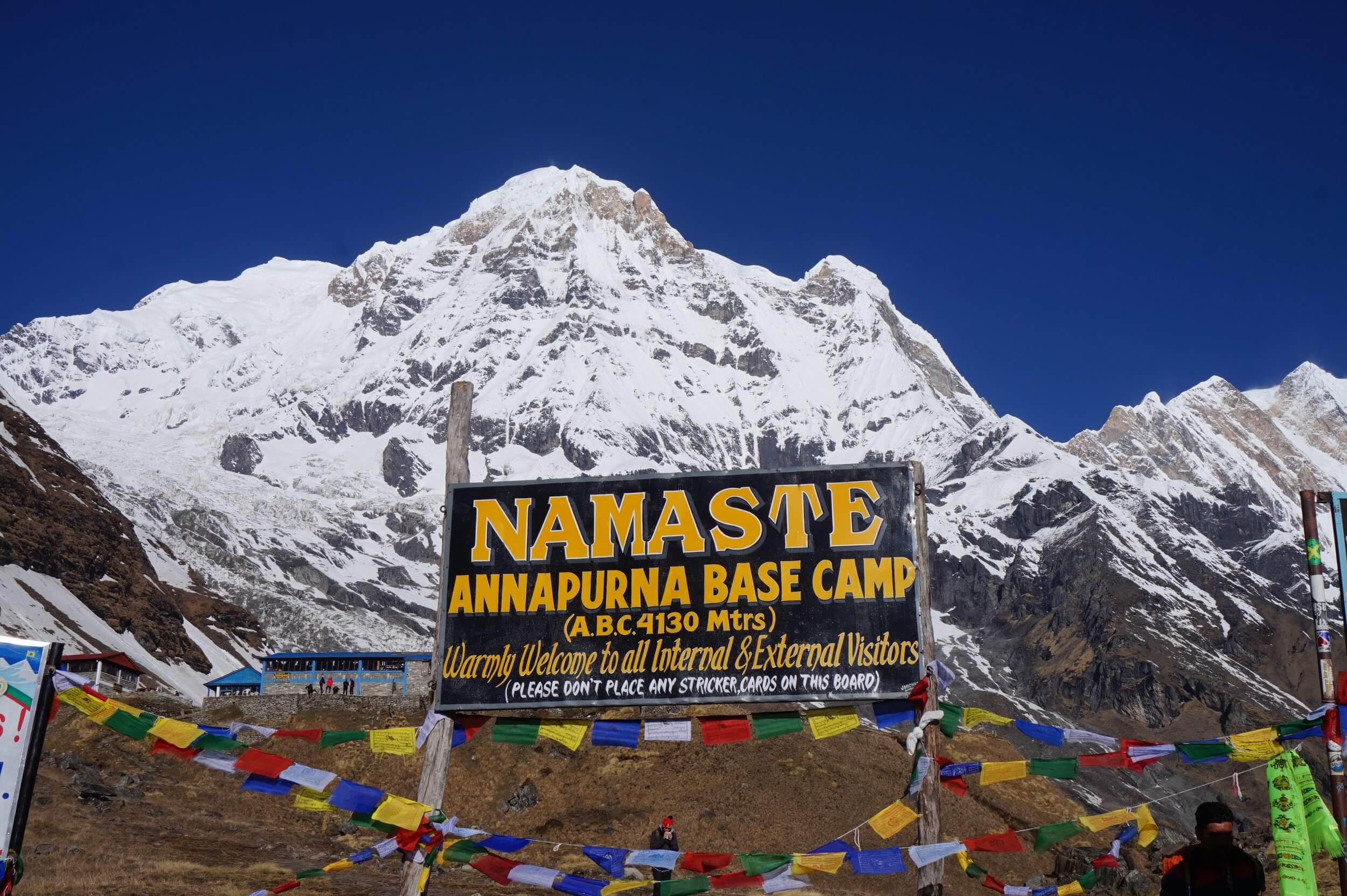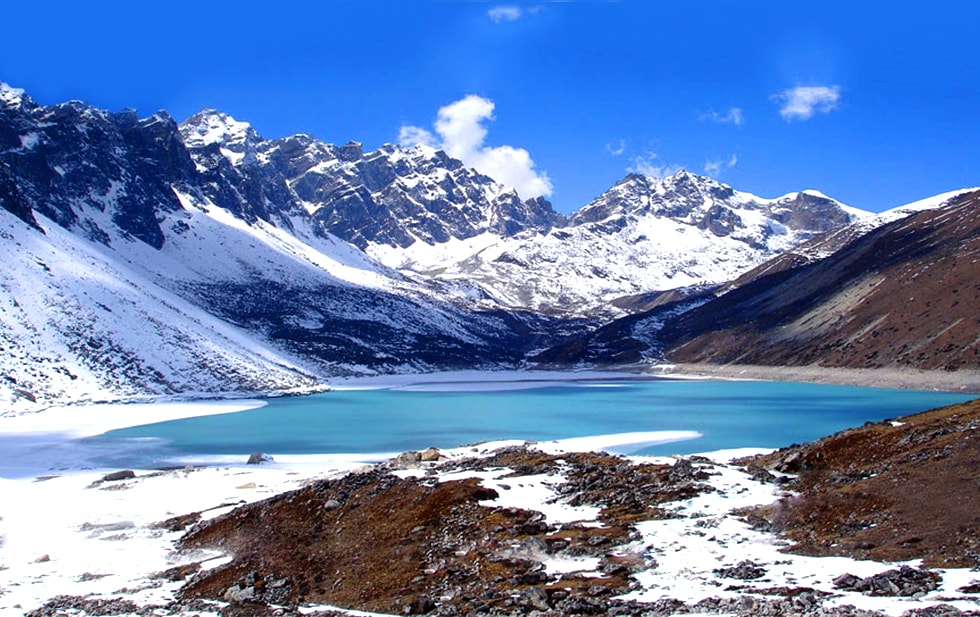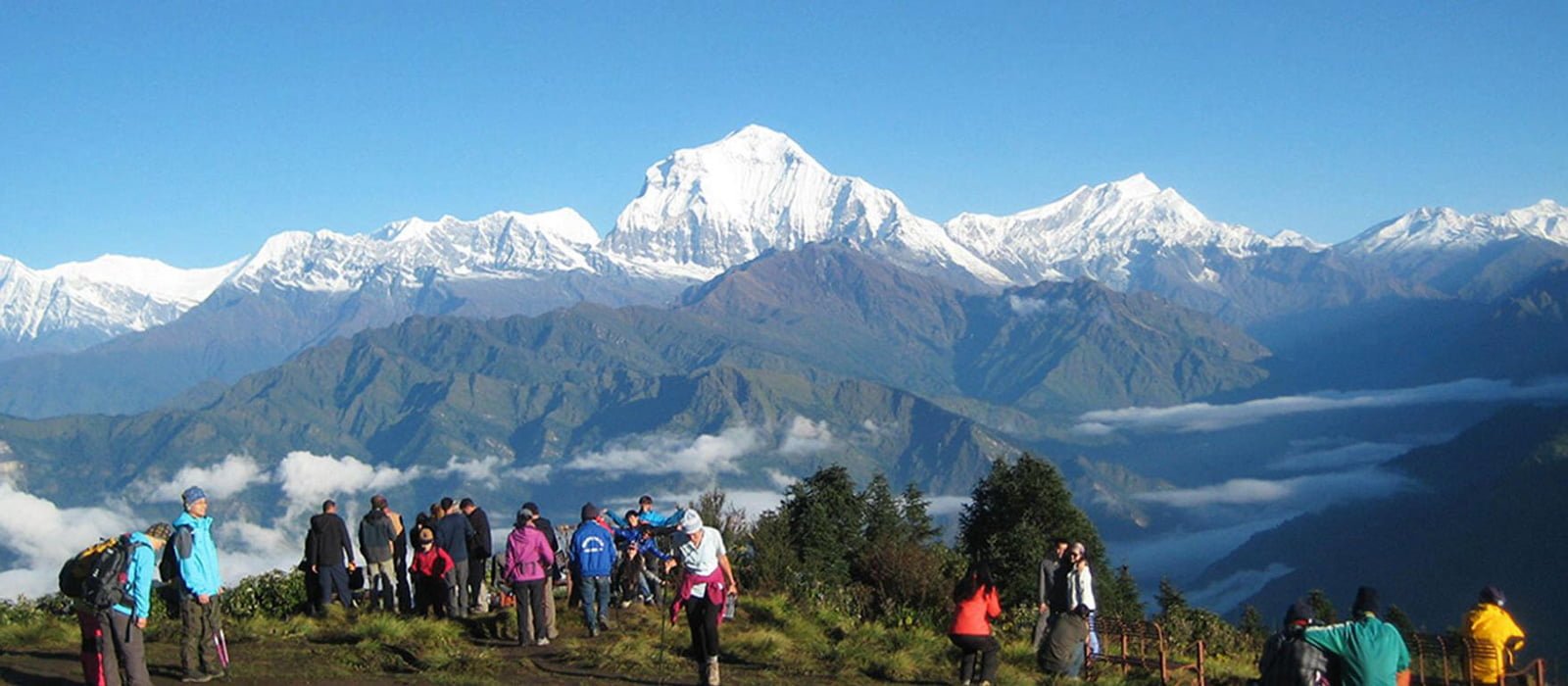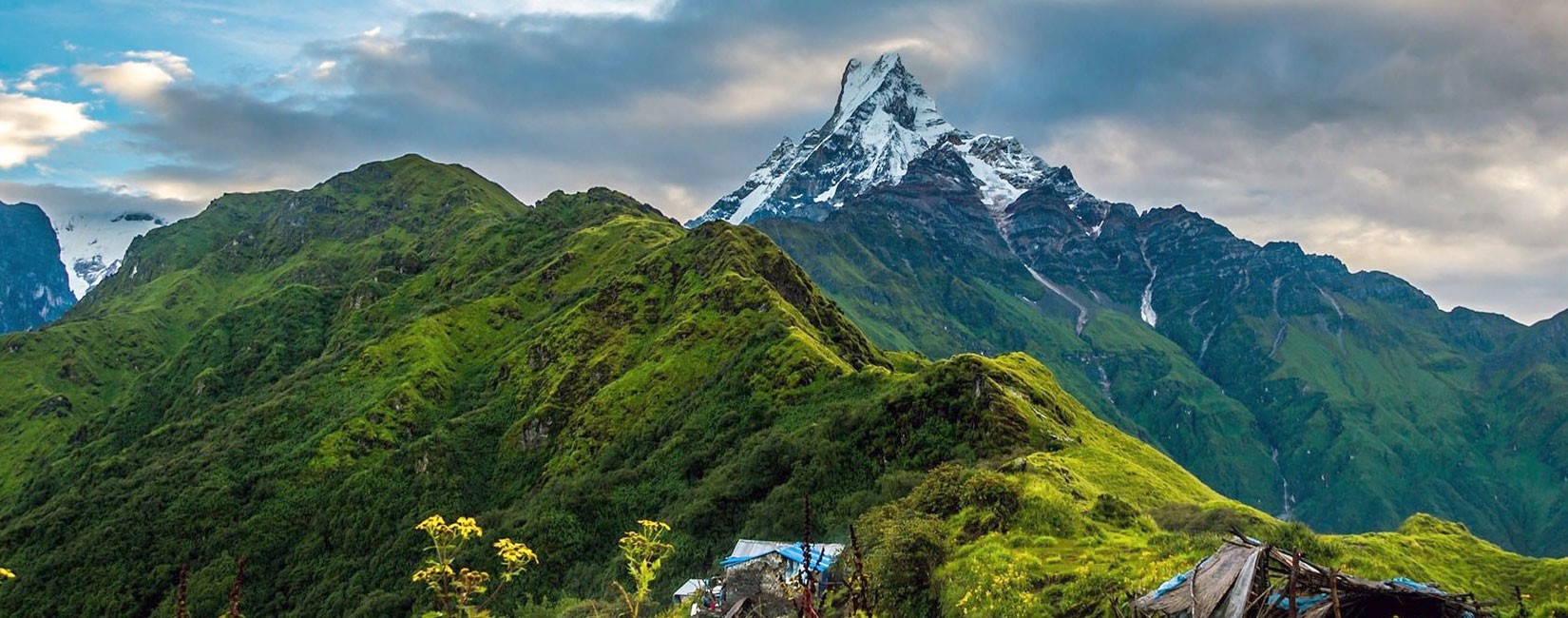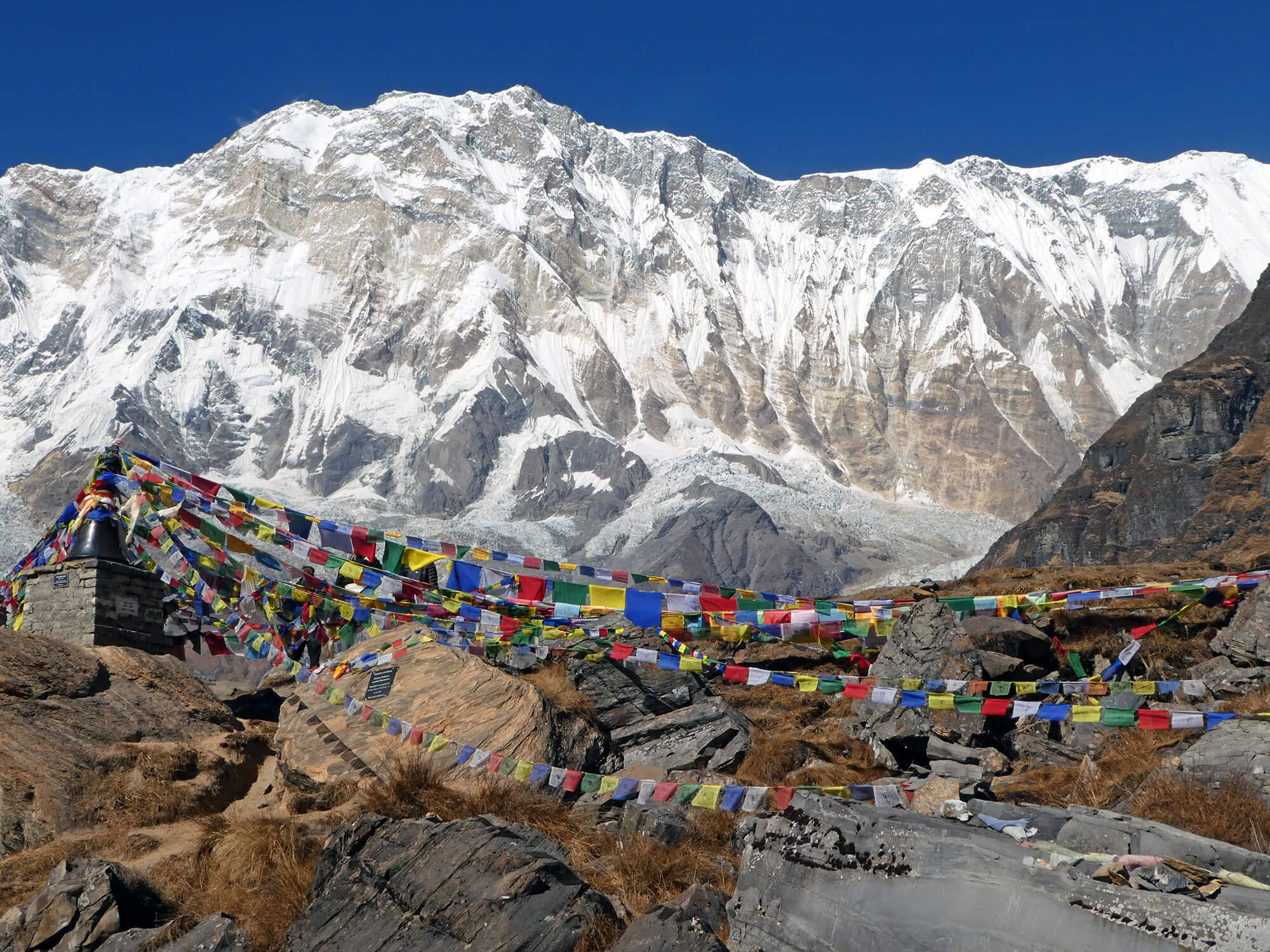Annapurna Region
Annapurna is a section of the Himalayas in north-central Nepal that includes Annapurna I with an altitude of 8,091 m (26,545 ft), thirteen additional peaks over 7,000 m (22,970 ft) and 16 more over 6,000 m (19,690 ft). The Annapurna section is a 55 km-long (34 mile-long) massif bounded by the Kali Gandaki Gorge on the west, the Marshyangdi River on the north and east, and Pokhara Valley on the south. Annapurna I is the tenth among Earth’s fourteen eight-thousanders.
Annapurna is a Sanskrit name which literal meaning is “full of food”, but is normally translated as Goddess of the Harvests. In Hinduism, Annapurna is the mother who feeds. Without her there is starvation, a universal fear: This makes Annapurna a universal goddess. The most popular shrine of Annapurna is located in Kashi, on the banks of the river Ganga.” Her association with the giving of food (wealth) led her in time to be transformed into Lakshmi, the Goddess of Wealth.
The entire massif and surrounding area are protected within the 7,629 km2 Annapurna Conservation Area, the first and largest conservation area in Nepal. The Annapurna Conservation Area is home to several world-class treks, including the Annapurna Circuit.


